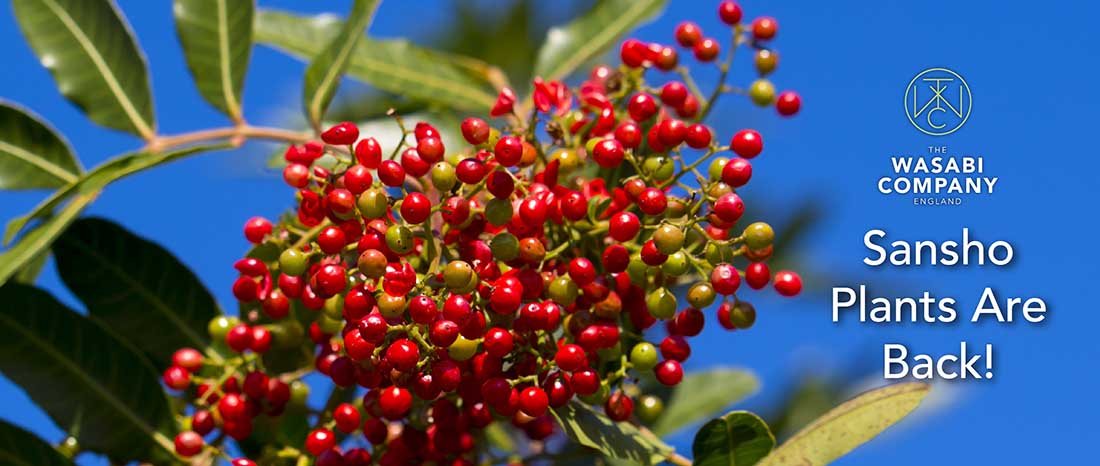
Sansho is a wildly aromatic Japanese berry that packs a powerful punch of tingly spiciness. Popular with creative and experimental chefs for its wonderful flavours of lemongrass, fresh lemon, mint and verbena, you can now grow it at home to experience for yourself!
Growing Sansho
Also knows as Japanese Prickly Ash, Sansho plants are easy to grow in full sun with well draining soil. More of a bush than a tree, in 10 years they can grow to about 3m by 2m and can produce high yields of fruit when both sexes are grown together. With bright red berries in the summer and spectacular orange and yellow foliage in the autumn, Sansho will add stunning Japanese flair to your garden.

The unripe, green berries can be harvested in spring. Pluck them from the bunches and use them to accompany fruity and herby flavours. They can also be preserved in brine or vinegar for later use.

The ripe, red berries are more floral and have an almost rose-like fragrance. These should be ready in the summer and left to dry on the tree until the husks reveal the black seed inside. Seeds are discarded (or planted), husks can be used in a peppermill or pestle and mortar to release the peppery citrus taste.
Grow Your Own Sansho

Did You Know Sansho Leaves Are
Also Prized Ingredients?
Kinome, the young Sansho leaves, can be harvested for their powerful flavour of citrus and herb which tingles on the tongue. They are perfect for using in recipes with fish, shellfish, chicken, soup and some desserts such as cheesecake.

Big Flavour In A Small Package
The pronounced pepper element delivers a unique citrus spiciness to the mouth that tingles and lingers. This has the effect of holding flavours in the mouth for varying lengths of time depending on the quantity of sansho that is used.
Classically paired with freshwater eel (Unagi), sansho is spectacularly versatile and is equally at home bringing floral herb flavours and a long-lasting, warming feel in the mouth to fish, white meat, curries and stews as it is with fruit and cream desserts.

